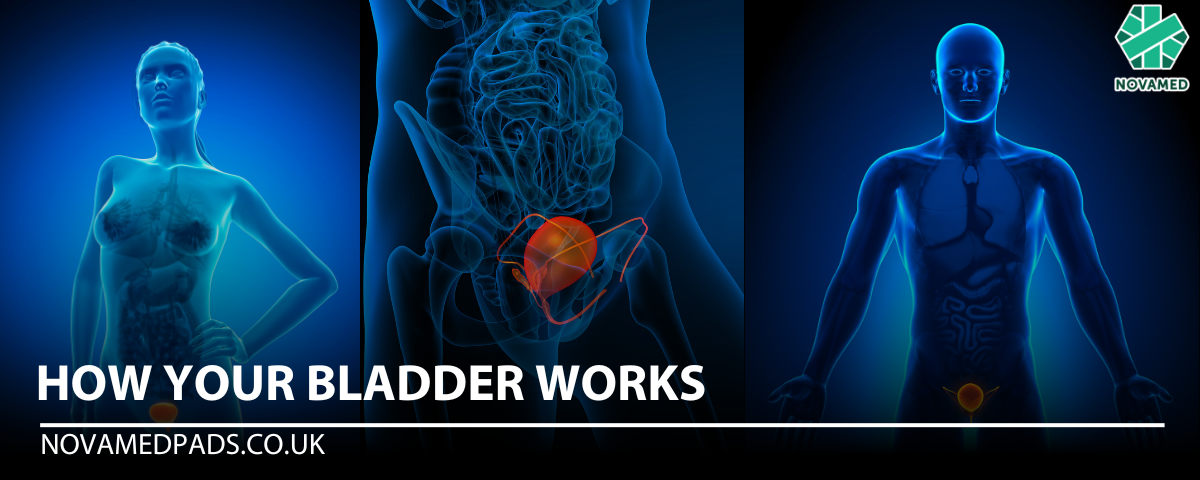
How your Bladder Works
The bladder plays a crucial role in the urinary system, storing and releasing urine at the appropriate times. In this blog, we'll explore how the bladder functions, common bladder-related conditions, and ways to maintain a healthy bladder. Understanding your bladder is essential for preventing issues like urinary incontinence or lower urinary tract symptoms (LUTS).
How Does the Bladder Work?
A healthy bladder is a muscular organ that holds up to 15 ounces of urine before signaling the brain that it's time to urinate. When your bladder fills, the micturition centre in your brain sends signals to the sphincter muscles to contract and release urine. However, if the bladder muscles or brain signals aren't functioning correctly, you may experience issues like interrupted urination, which can lead to bladder control problems.
Common Bladder Conditions
At any time, about 1% of people may experience benign prostatic hyperplasia (BPH), a condition where the prostate enlarges, causing urine retention and lower urinary tract symptoms. This is particularly common in older men.
Another condition that may affect bladder function is urinary incontinence, often caused by scarring, blockages, or muscle damage within the bladder. While these conditions cannot always be reversed, they can be managed through medical treatment and lifestyle changes.
Bladder Anatomy
The bladder is a hollow, muscular organ that sits within the pelvis, below the belly button, and is connected to the kidneys via the ureters. It holds urine until you are ready to release it. The bladder is controlled by two sphincter muscles which tighten and relax to allow the bladder to fill and empty.
The bladder's communication with the nervous system—especially with the abdomen, pelvis, and spinal cord—ensures the proper functioning of the urinary process. If this communication is disrupted, it may result in lower urinary tract symptoms (LUTS), such as difficulty emptying the bladder or needing to urinate frequently, especially during the night.
Understanding Bladder Control
Bladder control relies on involuntary muscle activity. The detrusor muscle contracts to help the bladder release urine. If the bladder or sphincter muscles fail to work properly, this may cause incontinence or bladder control issues.
For women, pelvic floor muscles play an important role in bladder control. These muscles can be strengthened through exercises to improve bladder function, particularly after childbirth or menopause.
Symptoms of Bladder Problems
Signs of potential bladder issues include:
- Frequent or urgent need to urinate
- Pain or burning with urination
- Urinating more frequently than every hour
- Night-time urination
- Weak urine stream or dribbling after urination in men
These symptoms may indicate conditions such as cystitis, obstructive bladder diseases (OBDs), or interrupted bladder syndrome (IBS).
Bladder Cancer and Other Concerns
One of the potential serious issues related to bladder health is bladder cancer, which can present symptoms such as urinary obstruction and interrupted urination. This often leads to difficulty emptying the bladder and may increase the risk of cancer development.
Conclusion
Understanding how your bladder works is the first step in recognising potential health issues and seeking appropriate treatment. Regular medical check-ups and being aware of your urinary health can help prevent conditions like urinary incontinence or more severe problems such as bladder cancer.
If you're experiencing any bladder-related issues, it’s important to consult a healthcare professional. You can also improve bladder health by adopting healthy lifestyle habits and doing pelvic floor exercises.
Feel free to explore our full range of incontinence solutions here!
Bladder and bowel incontinence may be caused by conditions which can be treated medically. Please consult your physician for medical advice and guidance.




